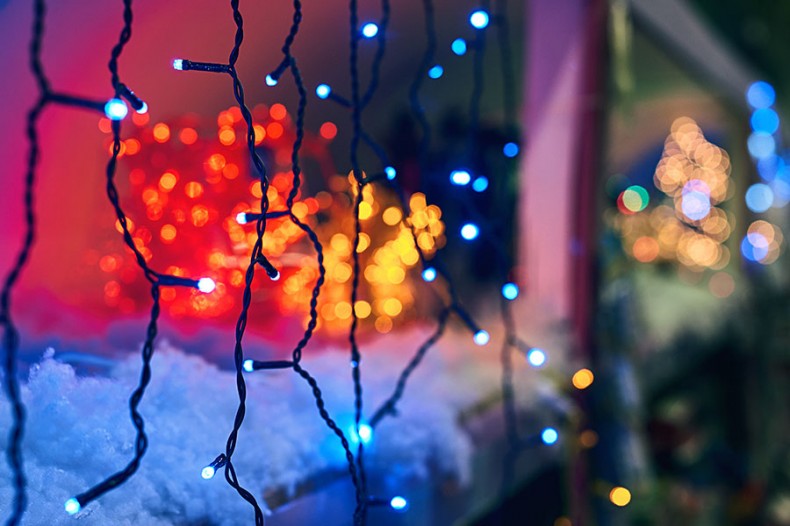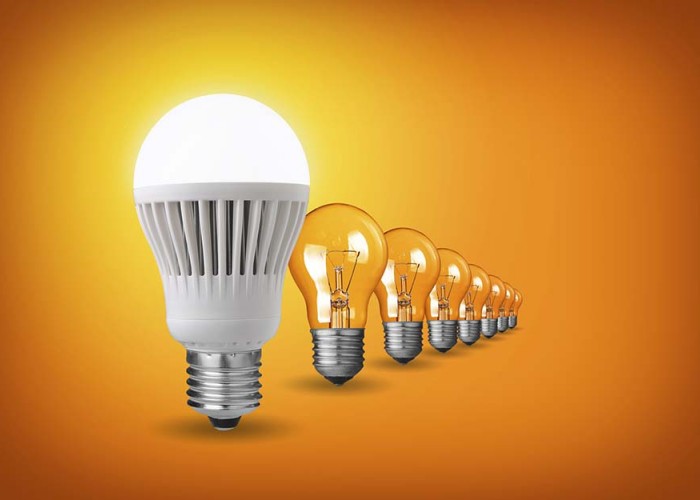The Evolution of Holiday Lighting
New LED options can help cut long-term costs
By Derrill HollyThomas Edison displayed the first strand of electric Christmas lights in 1880 outside his Menlo Park, New Jersey, laboratory. Two years later, his partner, Edward H. Johnson, hand-wired 80 red, white and blue bulbs together and wrapped them around his Christmas tree, mounted on a revolving motorized stand.
For more than a century, incandescent bulbs dominated holiday lighting. Miniature incandescent lights made their first appearances in the late 1960s and quickly became the go-to choice for holiday lighting as costs declined. But today, light-emitting diodes (LEDs) have caught on with consumers as a viable, efficient option for decking the halls during the holidays.
“LED lighting products now account for 60 percent of the holiday and seasonal lighting sold in the United States each year,” said Robert S. La Rocca, business development manager from the wire and cable/seasonal lighting division of Underwriters Laboratories.
Seasonal decorations are a $12 billion annual market, which now includes consumer lighting, ornaments, inflatables, artificial trees and table or mantle displays. LEDs are enticing consumers to buy more, and go bigger and brighter, even as they use far less energy.
“A typical 50-lamp incandescent light set can operate up to 0.170 amps or 20.4 watts. Based on this, and the requirements of the previous version of the Standard for Safety of Seasonal and Holiday Decorative Products, known in the industry as UL 588, you could only connect three strings end-to-end. This was incredibly limiting,” said La Rocca. “Now, however, with the current version of UL 588, allowing connection of up to 216 watts end-to-end, and a 50 lamp LED light set that typically operates at approx. 0.020 amps or 2.4 watts, you can technically connect more than 50 strings together.”
La Rocca added that consumers should always check the caution markings attached to the strings and follow the provided instruction manual, which advises the user how many strings to connect together.
More efficient
A 1,000-bulb string of incandescent miniatures consumes about 408 watts of energy compared to an equal LED string’s 48 watts. Since most residential circuits operate at a maximum load of 15 to 20 amps, up to three outlets might be needed for the incandescent strings to prevent overload, while the LEDs would use a single outlet.
“A consumer can connect up to 25 strings of LED mini-lights together on a single circuit,” said Dennis Krize, senior vice president of Nicolas Holiday, Inc. The Taiwan-based firm has manufactured seasonal lighting products for more than 50 years, and has been a licensee for GE brand holiday lighting since 2000.
“LED light strings may be more expensive initially, but the energy savings on some light strings will more than offset the added costs in two or three seasons,” Krize said.
Longer life?
While UL has not specifically tested lamps for longevity, products marked with the UL Holographic labels have undergone a series of testing related to mechanical, physical and electrical criteria. Product testing replicating the types of stresses caused by wind, moisture and rough handling are also conducted on samples.
“These products are designed to last a lot longer,” said La Rocca. “I cannot say that an LED lighting string will last longer than an incandescent lighting string, but I can tell you that a lighting string provided with the Energy Star® logo must come with a specified warranty backed by the manufacturer. Those marked with Energy Star labels are replaceable within a designated period.”
Because LEDs produce little or no heat, the temperature concerns may be reduced, he added, although consumers should always look for the UL logo on seasonal and holiday lighting to be sure the products were tested by UL.
Although UL 588 is a voluntary standard, the U.S. Consumer Product Safety Commission requires that manufacturers of seasonal lighting products meet the specific sections described in UL 588, the Standard for Safety of Seasonal and Holiday Decorative Products.
“Even though the majority of the products covered by UL 588 are considered to be for temporary use, in many cases the requirements are more stringent than other products that are for use all year,” La Rocca added.
About the Author
Derrill Holly writes on cooperative issues for the National Rural Electric Cooperative Association, the Arlington, Va.-based service arm of the nation’s 900‑plus consumer-owned, not‑for‑profit electric cooperatives.-
More on LEDs
-
Share this story:





